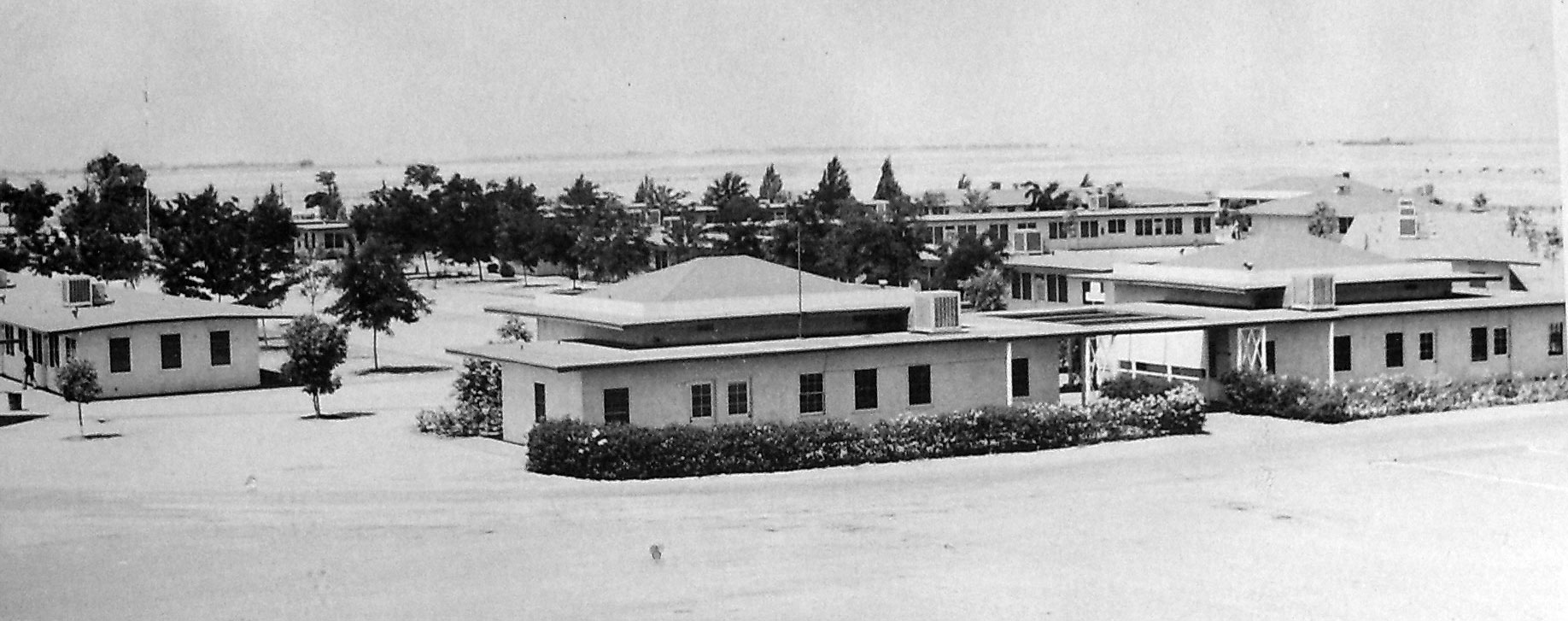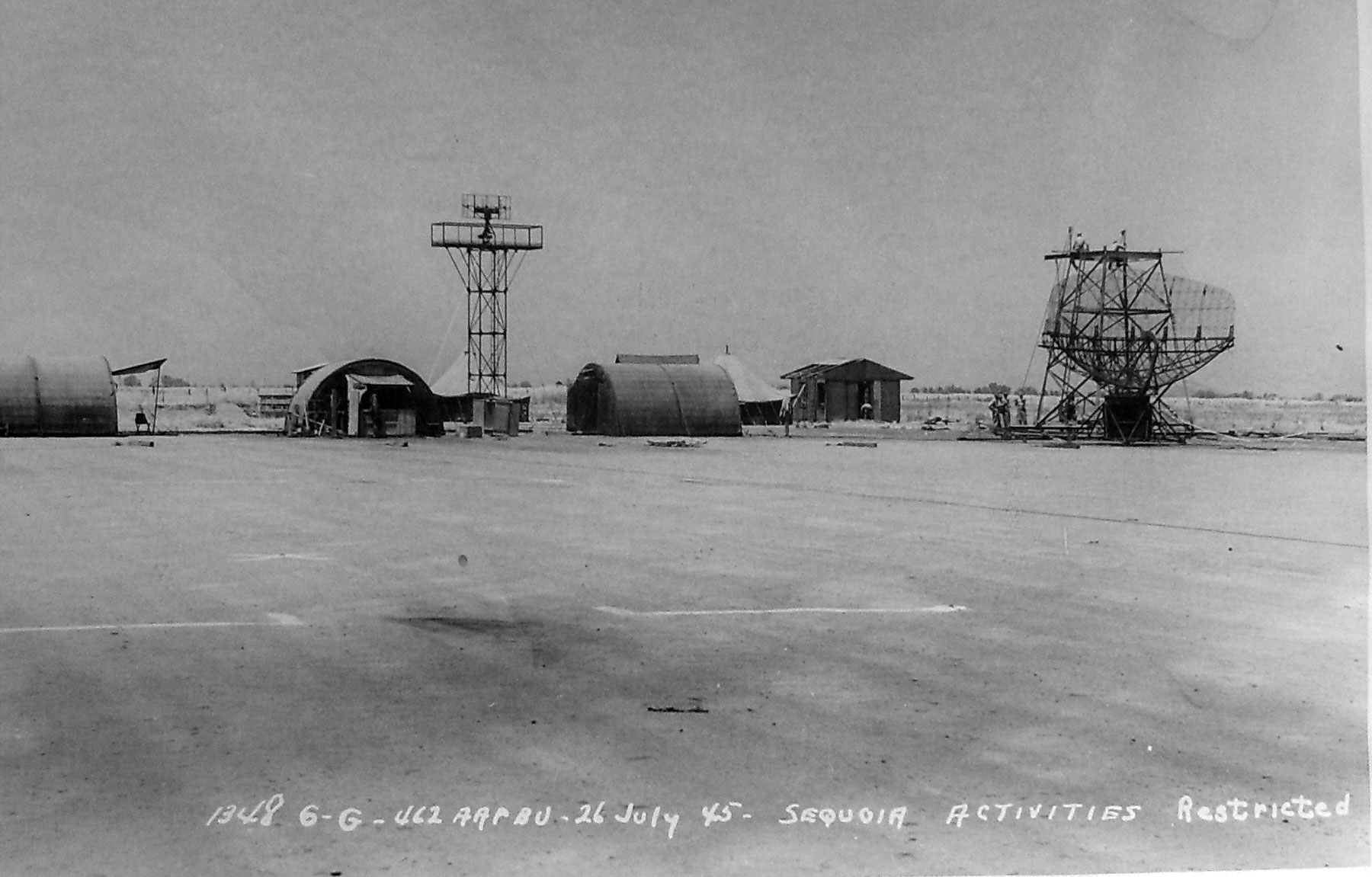
On 23 July 1945, the post, now known as Camp Sequoia, was taken over by the Western Signal Aviation Training Center at Camp Pinedale as a sub-post. It was a replacement for nearby Camp Visalia. The garrison, which moved from Camp Visalia, consisted of Squadron F, 462nd Army Air Forces Base Unit (AAFBU) commanded by Maj. Hugh J. Roberts.
The physical facilities of' Camp Sequoia included administrative buildings and quarters for officers and enlisted men, encircling a central location. A consolidated mess hall, which accommodated 1,000 enlisted men and a limited number of' officers, was located nearby. Adjacent to the mess hall was a Post Exchange, a Service Club and a dance floor. The former hangers were used to house the supply section of Squadron F, the equipment of tactical units assigned and the Information Center.

Recreational facilities at Camp Sequoia centered on the base swimming pool. Nearby were tennis and handball courts, and a softball diamond. Regular dances were conducted at the base Service Club and in Visalia.
Tactical unit training at Camp Sequoia was designed to provide a sufficient flow of individual replacements, cadres, and teams as required by Camp Pinedale and higher headquarters. Much of the equipment used by these groups was transferred from Camp Visalia to Camp Sequoia. This did not include the SCR-615-B nor the SCR-215, which were dismantled and shipped to Air Corps Supply at Camp Pinedale. The operation required the expenditure of 1150 man-hours of labor.
In addition to its function of containing base administrative personnel, Squadron F was charged with the responsibility of cadre training for the AN/TPS-10, SCR-615-B, and SP-1-M radar units.
Squadron D, 462nd AAFBU, was transferred from Camp Pinedale to Camp Sequoia on 29 July 1945, for the purpose of providing on-the-job training for fighter control squadron personnel in the use of the AN/CPS-1. The unit also provided training on the AN/CPS-1 for maintenance and operating crews, assigned to the controllers at Hammer Field.

graduates, including one who reached four-star rank and headed the Air Force Logistics Command.
|
|
|
|
| 7 Dec 41 | Air Corps Training Detachment | |
| Army of the United States Station List | 1 Jun 43 |
|
|
|
|
| History of Camp Pinedale | 23 Jul 45 | Squadron F, 462nd Army Air Forces Base Unit (Western Signal Aviation Unit Training Center) |